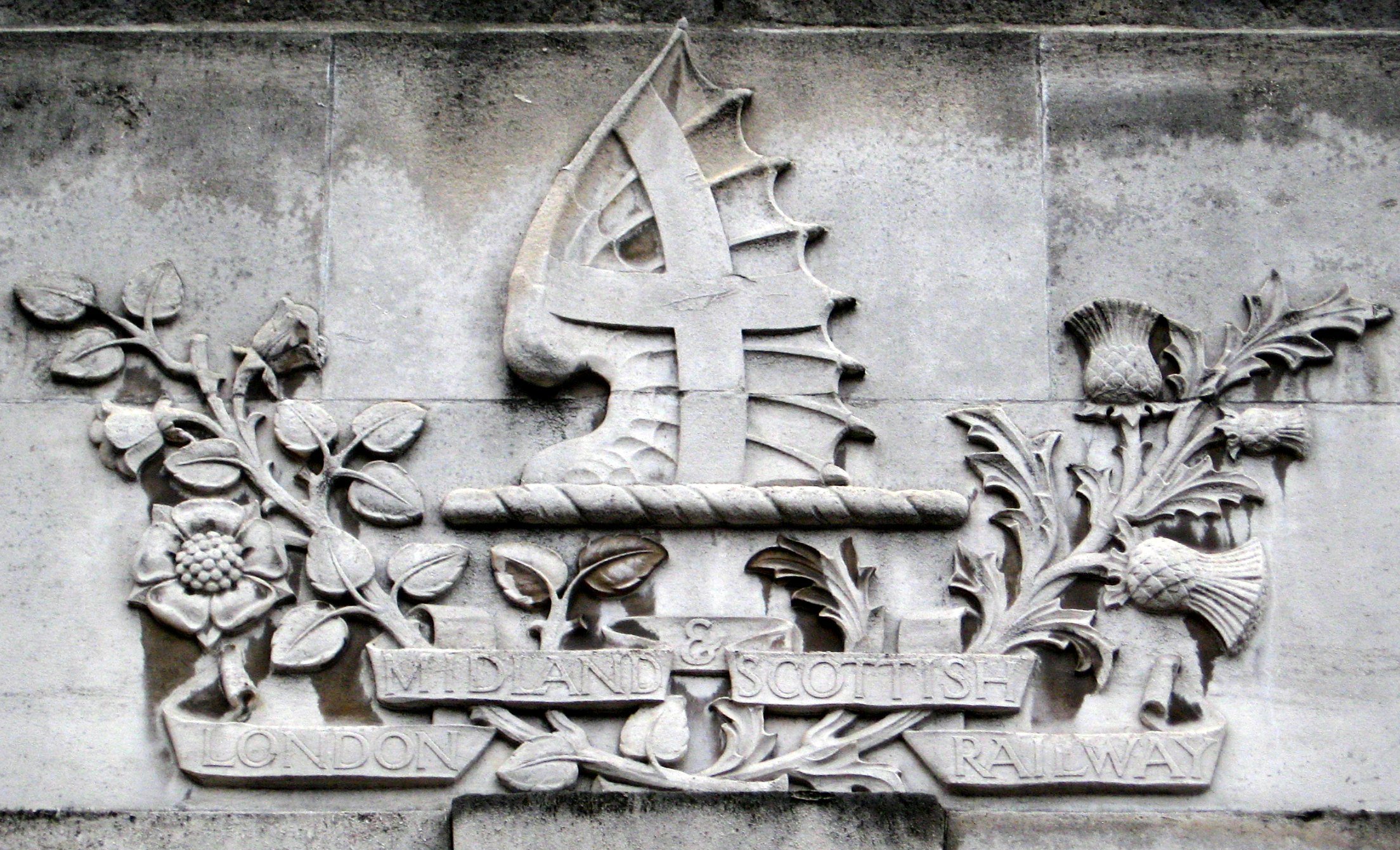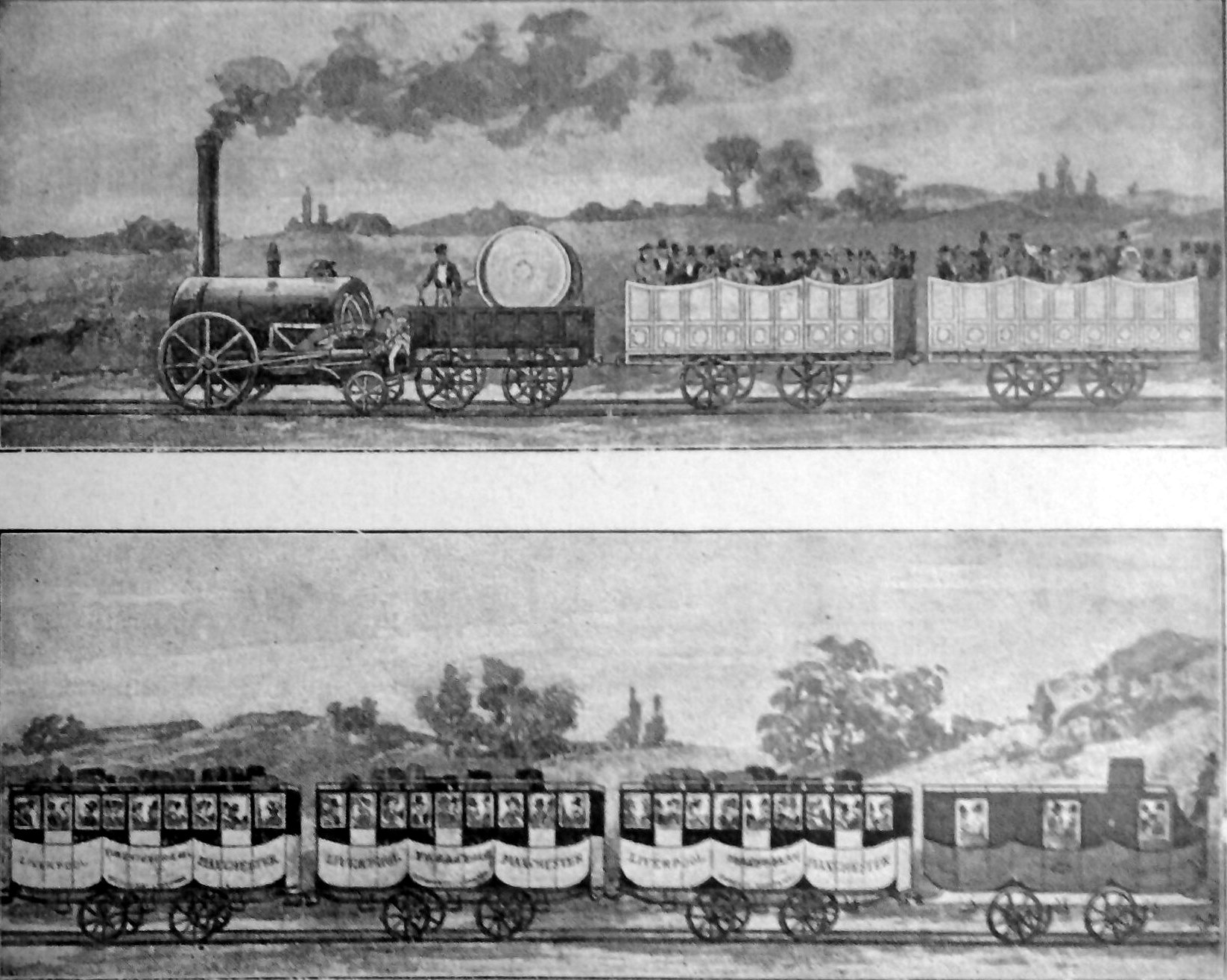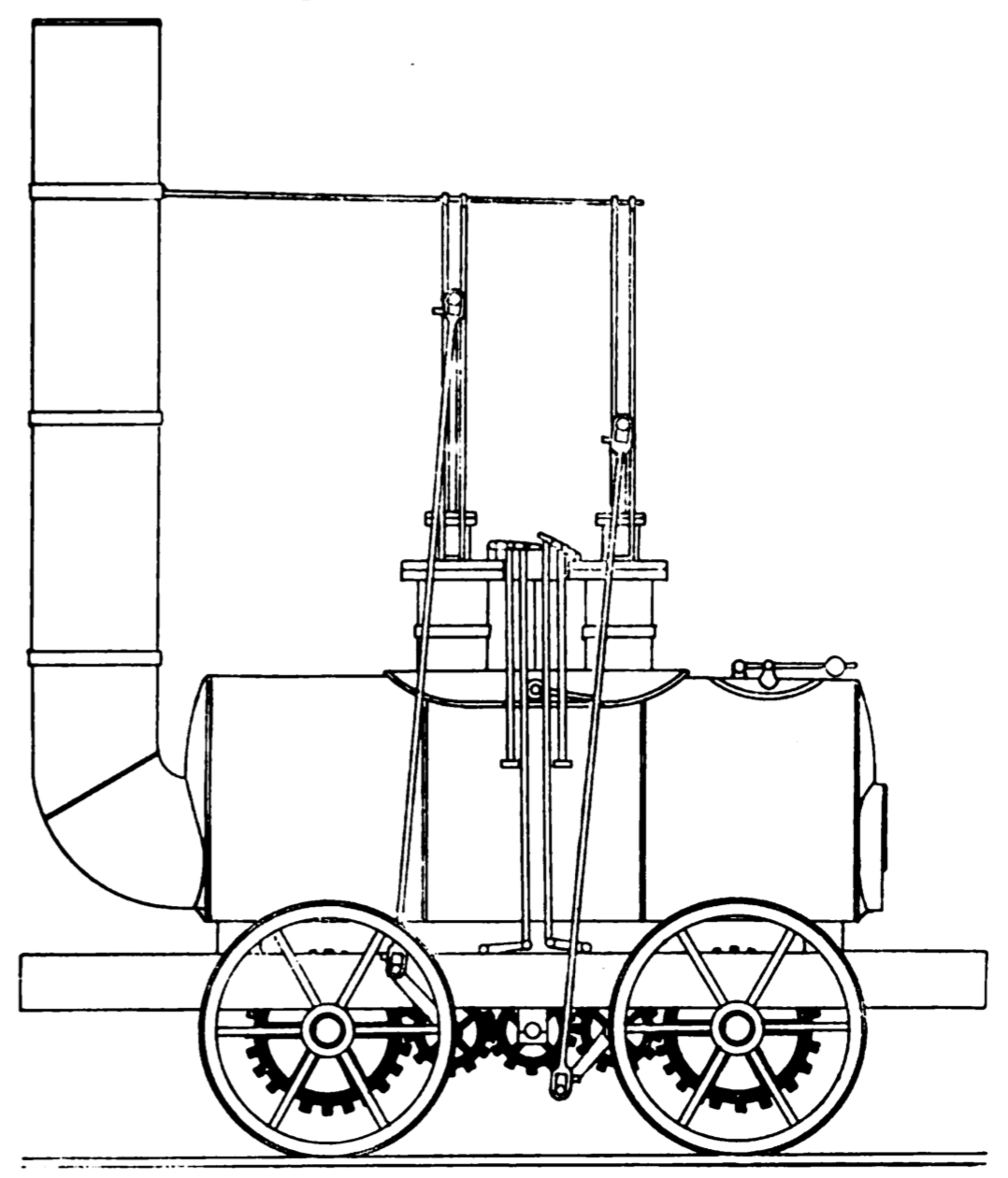|
Kilmarnock And Troon Railway
The Kilmarnock and Troon Railway was an early railway line in Ayrshire, Scotland. It was constructed to bring coal from pits around Kilmarnock to coastal shipping at Troon Harbour, and passengers were carried. It opened in 1812, and was the first railway in Scotland to obtain an authorising act of Parliament; it would soon also become the first railway in Scotland to use a steam locomotive; the first to carry passengers; and the River Irvine bridge, ''Laigh Milton Viaduct'', is the earliest railway viaduct in Scotland. It was a plateway, using L-shaped iron plates as rails, to carry wagons with flangeless wheels. In 1841, when more modern railways had developed throughout the West of Scotland, the line was converted from a plateway to a railway and realigned in places. The line became part of the Glasgow and South Western Railway system. Much of the original route is part of the present-day Kilmarnock to Barassie railway line, although the extremities of the original line hav ... [...More Info...] [...Related Items...] OR: [Wikipedia] [Google] [Baidu] |
Scotland
Scotland is a Countries of the United Kingdom, country that is part of the United Kingdom. It contains nearly one-third of the United Kingdom's land area, consisting of the northern part of the island of Great Britain and more than 790 adjacent Islands of Scotland, islands, principally in the archipelagos of the Hebrides and the Northern Isles. To the south-east, Scotland has its Anglo-Scottish border, only land border, which is long and shared with England; the country is surrounded by the Atlantic Ocean to the north and west, the North Sea to the north-east and east, and the Irish Sea to the south. The population in 2022 was 5,439,842. Edinburgh is the capital and Glasgow is the most populous of the cities of Scotland. The Kingdom of Scotland emerged as an independent sovereign state in the 9th century. In 1603, James VI succeeded to the thrones of Kingdom of England, England and Kingdom of Ireland, Ireland, forming a personal union of the Union of the Crowns, three kingdo ... [...More Info...] [...Related Items...] OR: [Wikipedia] [Google] [Baidu] |
Laigh Milton Viaduct
Laigh Milton Viaduct is a railway viaduct near Laigh Milton mill to the west of Gatehead, Ayrshire, Gatehead in East Ayrshire, Scotland, about west of Kilmarnock. It is probably the world's earliest surviving railway viaduct on a public railway,Roland Paxton and Jim Shipway, ''Civil Engineering Heritage: Scotland Lowlands and Borders'', Thomas Telford Publishing, London, 2007, . and the earliest known survivor of a type of multi-span railway structure subsequently adopted universally. The viaduct was restored in 1995–1996Sou' West the G&SWR Newsletter, P.5 and is a Category A listed structure since 1982. It bridges the River Irvine which forms the boundary between East Ayrshire and South Ayrshire. It was built for the Kilmarnock and Troon Railway, opened in 1812; the line was a horse drawn plateway (although locomotive traction was tried later). The first viaduct was closed in 1846 when the railway line was realigned to ease the sharp curve for locomotive operation, and a woo ... [...More Info...] [...Related Items...] OR: [Wikipedia] [Google] [Baidu] |
British Rail
British Railways (BR), which from 1965 traded as British Rail, was a state-owned company that operated most rail transport in Great Britain from 1948 to 1997. Originally a trading brand of the Railway Executive of the British Transport Commission, it became an independent statutory corporation in January 1963, when it was formally renamed the British Railways Board. British Railways was formed on 1 January 1948 as a result of the Transport Act 1947, which nationalised the Big Four British railway companies along with some other (but not all) smaller railways. Profitability of the railways became a pressing concern during the 1950s, leading to multiple efforts to bolster performance, including some line closures. The 1955 Modernisation Plan formally directed a process of dieselisation and electrification to take place; accordingly, steam locomotives had been entirely replaced by diesel and electric traction (except for the narrow-gauge Vale of Rheidol Railway tourist lin ... [...More Info...] [...Related Items...] OR: [Wikipedia] [Google] [Baidu] |
London, Midland And Scottish Railway
The London, Midland and Scottish Railway (LMSIt has been argued that the initials LMSR should be used to be consistent with London and North Eastern Railway, LNER, Great Western Railway, GWR and Southern Railway (UK), SR. The London, Midland and Scottish Railway's corporate image used LMS, and this is what is generally used in historical circles. The LMS occasionally also used the initials LM&SR. For consistency, this article uses the initials LMS.) was a British railway company. It was formed on 1 January 1923 under the Railways Act 1921, which required the grouping of over 120 separate railways into four. The companies merged into the LMS included the London and North Western Railway, the Midland Railway, the Lancashire and Yorkshire Railway (which had previously merged with the London and North Western Railway on 1 January 1922), several Scottish railway companies (including the Caledonian Railway), and numerous other, smaller ventures. Besides being the world's largest ... [...More Info...] [...Related Items...] OR: [Wikipedia] [Google] [Baidu] |
9 & 10 Vict
9 (nine) is the natural number following and preceding . Evolution of the Hindu–Arabic digit Circa 300 BC, as part of the Brahmi numerals, various Indians wrote a digit 9 similar in shape to the modern closing question mark without the bottom dot. The Kshatrapa, Andhra and Gupta started curving the bottom vertical line coming up with a -look-alike. How the numbers got to their Gupta form is open to considerable debate. The Nagari continued the bottom stroke to make a circle and enclose the 3-look-alike, in much the same way that the sign @ encircles a lowercase ''a''. As time went on, the enclosing circle became bigger and its line continued beyond the circle downwards, as the 3-look-alike became smaller. Soon, all that was left of the 3-look-alike was a squiggle. The Arabs simply connected that squiggle to the downward stroke at the middle and subsequent European change was purely cosmetic. While the shape of the glyph for the digit 9 has an ascender in most modern typ ... [...More Info...] [...Related Items...] OR: [Wikipedia] [Google] [Baidu] |
Glasgow, Paisley, Kilmarnock And Ayr Railway
The Glasgow, Paisley, Kilmarnock and Ayr Railway (GPK&AR) was a railway in Scotland that provided train services between Glasgow, Kilmarnock and Ayr. It opened its first line, between Glasgow and Ayr, in stages from 1839 to 1840. The section between Glasgow and Paisley, Renfrewshire, Paisley was made jointly with the Glasgow, Paisley and Greenock Railway. Later it built a line from Dalry, North Ayrshire, Dalry via Kilmarnock to Cumnock, linking there with the Glasgow, Dumfries and Carlisle Railway, and together forming a through route from Glasgow to Carlisle, Cumbria, Carlisle. The two companies merged to form the Glasgow and South Western Railway. The original main line from Glasgow to Ayr, and the line from Kilmarnock to Carlisle, are in use today, although many intermediate stations and branch lines have closed. History Earliest lines Coal and other minerals were extracted in the west of Scotland from medieval times; getting the heavy product to market was always a challe ... [...More Info...] [...Related Items...] OR: [Wikipedia] [Google] [Baidu] |
7 Will
7 (seven) is the natural number following 6 and preceding 8. It is the only prime number preceding a cube. As an early prime number in the series of positive integers, the number seven has symbolic associations in religion, mythology, superstition and philosophy. The seven classical planets resulted in seven being the number of days in a week. 7 is often considered lucky in Western culture and is often seen as highly symbolic. Evolution of the Arabic digit For early Brahmi numerals, 7 was written more or less in one stroke as a curve that looks like an uppercase vertically inverted (ᒉ). The western Arab peoples' main contribution was to make the longer line diagonal rather than straight, though they showed some tendencies to making the digit more rectilinear. The eastern Arab peoples developed the digit from a form that looked something like 6 to one that looked like an uppercase V. Both modern Arab forms influenced the European form, a two-stroke form consisting of a ho ... [...More Info...] [...Related Items...] OR: [Wikipedia] [Google] [Baidu] |
Liverpool And Manchester Railway
The Liverpool and Manchester Railway (L&MR) was the first inter-city railway in the world. It Opening of the Liverpool and Manchester Railway, opened on 15 September 1830 between the Lancashire towns of Liverpool and Manchester in England. It was also the first railway to rely exclusively on locomotives driven by Steam engine, steam power, with no Horsecar, horse-drawn traffic permitted at any time; the first to be entirely double track throughout its length; the first to have a true Railway signalling, signalling system; the first to be fully Public transport timetable, timetabled; and the first to carry mail. Trains were hauled by company steam locomotives between the two towns, though private wagons and carriages were allowed. Cable railway, Cable haulage of freight trains was down the steeply-graded Wapping Tunnel to Liverpool Docks from Edge Hill junction. The railway was primarily built to provide faster transport of raw materials, finished goods, and passengers between ... [...More Info...] [...Related Items...] OR: [Wikipedia] [Google] [Baidu] |
Ardrossan Railway
The Ardrossan Railway was a railway company in Scotland, whose line was built in the mid-19th century. It primarily ran services between Kilwinning and Ardrossan, as well as freight services to and from collieries between Kilwinning and Perceton. The line was later merged with the Glasgow and South Western Railway, and is today part of the Ayrshire Coast Line. History In the first years of the 19th century, the 12th Earl of Eglinton developed Ardrossan Harbour, intending it as a sea port for the City of Glasgow. The extensive works he had carried out cost over £100,000. At that time the River Clyde was not navigable to large vessels, and he proposed a canal to reach Ardrossan. In 1806 he obtained authority in the Glasgow, Paisley and Ardrossan Canal Act 1806 ( 46 Geo. 3. c. lxxv) to construct the Glasgow, Paisley and Ardrossan Canal. The authorised share capital was £140,000, but subscriptions disappointed him, amounting to only £44,342. Work proceeded from the Glasgow end, ... [...More Info...] [...Related Items...] OR: [Wikipedia] [Google] [Baidu] |
Monkland And Kirkintilloch Railway
The Monkland and Kirkintilloch Railway (M&KR) was an early mineral railway running from a colliery at Monklands to the Forth and Clyde Canal at Kirkintilloch, Scotland. It was the first railway to use a rail ferry, the first public railway in Scotland,Henry Grote Lewin, ''The British Railway System'', G Bell and Sons Ltd, London, 1914 and the first in Scotland to use locomotive power successfully, and it had a great influence on the successful development of the Lanarkshire iron industry. It opened in 1826. It was built to enable the cheaper transport of coal to market, breaking the monopoly of the Monkland Canal. It connected with the Forth and Clyde Canal at Kirkintilloch, giving onward access not only to Glasgow, but to Edinburgh as well. The development of good ironstone deposits in the Coatbridge area made the railway successful, and the ironstone pits depended at first on the railway. Horse traction was used at first, but steam locomotive operation was later introduced: ... [...More Info...] [...Related Items...] OR: [Wikipedia] [Google] [Baidu] |
Stockton And Darlington Railway
The Stockton and Darlington Railway (S&DR) was a railway company that operated in north-east England from 1825 to 1863. The world's first public railway to use steam locomotives, its first line connected coal mining, collieries near with and in County Durham, and was officially opened on 27 September 1825. The movement of coal to ships rapidly became a lucrative business, and the line was soon extended to a at Middlesbrough. While coal waggons were hauled by steam locomotives from the start, passengers were carried in coaches drawn by horses until carriages hauled by steam locomotives were introduced in 1833. The S&DR was involved in building the East Coast Main Line between and Darlington, but its main expansion was at Middlesbrough Docks and west into Weardale and east to Redcar. It suffered severe financial difficulties at the end of the 1840s and was nearly taken over by the York, Newcastle and Berwick Railway, before the discovery of iron ore in Cleveland, Yorkshi ... [...More Info...] [...Related Items...] OR: [Wikipedia] [Google] [Baidu] |
Killingworth Locomotives
George Stephenson built a number of experimental steam locomotives to work in the Killingworth Colliery between 1814 and 1826. Background George Stephenson was appointed as engine-wright at Killingworth Colliery in 1812 and immediately improved the haulage of the coal from the mine using fixed engines. But he had taken an interest in Blenkinsop's engines in Leeds and Blackett's experiments at Wylam colliery, where he had been born. By 1814 he persuaded the lessees of the colliery to fund a "travelling engine" which first ran on 25 July. By experiment he confirmed Blackett's observation that the friction of the wheels was sufficient on an iron railway without cogs but still used a cogwheel system in transmitting power to the wheels. ''Blücher'' ''Blücher'' (often spelled ''Blutcher'') was built by George Stephenson in 1814; the first of a series of locomotives that he designed in the period 1814–16 which established his reputation as an engine designer and laid the found ... [...More Info...] [...Related Items...] OR: [Wikipedia] [Google] [Baidu] |








